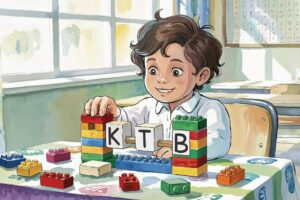
Arabic in the Qur’an: Why Translating the Qur’an Isn’t Enough
🌟 Introduction: More Than Words
Have you ever read a translation of the Qur’an and still felt like something was… missing? You’re not alone. Millions of non-Arabic speakers read translated versions of the Qur’an daily—but the truth is, translation alone cannot capture the full beauty, precision, and spiritual impact of Allah’s words. That’s because the Qur’an was revealed in Arabic—not just any Arabic, but a layered, poetic, and deeply interconnected language system. To truly feel the Qur’an, we need to go deeper. At Roots Muslim School, we teach students to approach Arabic in the Qur’an through three powerful levels of understanding—and the results are transformational.

🧠 The 3 Levels of Arabic Understanding in the Qur’an
Level 1: Word Recognition
This is where it begins. Students start by recognizing frequently repeated Arabic words like “Allah,” “rahma,” and “jannah.” They match Arabic vocabulary with their English meanings, giving them a basic framework.
🔍 Example:
When you see the word “rahma” in Arabic, you may translate it as “mercy.” But this level only scratches the surface.
Level 2: Sentence Meaning
Next, learners begin to understand full phrases and how words interact with each other. Arabic grammar and sentence structure allow for a more nuanced view than English can offer.
🧠 Example:
The phrase “Bismillah-ir-Rahman-ir-Raheem” contains two words from the same root (R-Ḥ-M) but translated differently: “The Most Merciful, The Most Compassionate.” This level helps learners understand why both are used and how they differ.
Level 3: Root Wisdom and Eloquence
Here’s where things get truly powerful. Arabic is a root-based language, meaning that most words stem from three-letter roots with multiple connected meanings. Understanding these roots unlocks deeper tafsir (interpretation), spiritual reflection, and connection with the divine message.
💡 Example:
The root T-Q-W forms words like taqwa (God-consciousness), muttaqeen (those who have taqwa), and yattaqoon (they protect themselves). A translator may just write “piety,” but a root-aware learner sees the connection between awareness, protection, and spiritual mindfulness.
🧩 Why Translation Falls Short
- 🔄 English has limitations in conveying rhythm, wordplay, and context-specific connotations embedded in Arabic.
- 🧭 Tafsir scholars base interpretations on Arabic linguistics, not English renderings.
- ❤️ The Qur’an’s emotional power is closely tied to its sound and rhythm—something only Arabic delivers.
When you rely solely on translation, you might get the gist, but not the guidance.

📚 How Roots Muslim School Bridges the Gap for Arabic in the Qur’an:
At Roots, we don’t just teach Arabic—we open doors to the Qur’an’s true voice. Our curriculum:
- Breaks down Arabic into easy, interactive lessons
- Uses visual games and storytelling to make root meanings memorable
- Guides learners through all 3 levels of understanding
- Supports adults, teens, and even young learners in their journey toward Qur’anic fluency
Whether you’re a busy parent or a high school student, you can go deeper than translation—with the right tools and a community that supports you.
🎯 Final Thoughts: Your Next Step
Translation is a window—but Arabic is the doorway.
If you want to truly understand what Allah is saying to you, go beyond translation. Learn the language He chose for His final revelation. You’re not too old, too busy, or too late to start.
👉 Explore our Arabic learning programs today and take your first step toward understanding the Qur’an at all three levels.
Start Learning Arabic Now »



